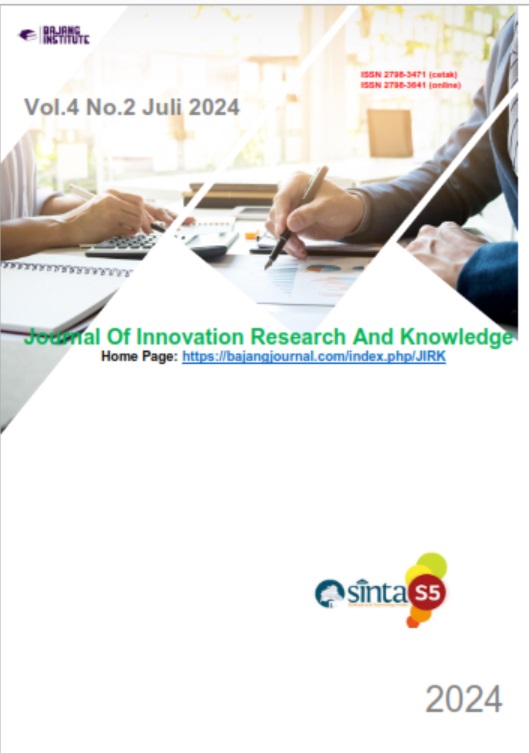IT’S OKAY TO NOT BE OKAY: THE BOOK OF FORBIDDEN FEELINGS THROUGH CONNOTATIVE MEANING ANALYSIS
DOI:
https://doi.org/10.53625/jirk.v4i2.8131Keywords:
Figurative Language, Meaning, Connotative MeaningAbstract
Lifestyle and challenges found by many Gen Z individuals demotivate for a number of reasons. Therefore, it will be important to provide more mental health resources, namely, “The Book of Forbidden Feelings”. This study aims to find out what utterances that use figurative languages that contain connotative meanings occurring on The Book of Forbidden Feelings and how those figurative languages that contain connotative meanings provide mental health resources to demotivated Gen Z individuals. This research used qualitative research to describe the utterances that use figurative languages that contain connotative meanings on The Book of Forbidden Feelings. In this study, the researchers applied types of meaning theory with the scope of connotative meaning to describe the utterances that use figurative languages that contain connotative meanings on the Book of Forbidden Feelings. Besides, the researchers interviewed 3 Gen Z Individuals who had read the book as a purposive sample to see their perception towards how those figurative languages that contain connotative meanings provide mental health resources to demotivated Gen Z individuals. The result shows that the utterances that use figurative languages that contain connotative meanings on the book guiding the readers to let things be as they are and surrender with sincerity. In addition, those figurative languages that contain connotative meanings provide mental health resources to demotivated Gen Z individuals by leading them to acceptance when they struggle with sadness. This study recommend that future researcher should provide more examples and theories
References
Charteris-Black, J. (2005). Politicians and Rhetoric: The Persuasive Power of Metaphor. Palgrave Macmillan.
Creswell, J. W. (2007). Qualitative Inquiry and Research Design: Choosing Among Five Approaches. In Sage Publications. https://doi.org/10.1177/1524839915580941
Greenbaum, S., & Quirk, R. (1990). A Student's Grammar of the English Language. Longman.
Keraf, Gorys. (2007). Diksi dan Gaya Bahasa. Jakarta: PT Gramedia Pustaka.
Kövecses, Z. (2002). Metaphor: A Practical Introduction. Oxford University Press.
Larson, M.L. (1998). Meaning-Based Translation. A Guide to Cross-Language Equivalence. Second Edition. Lanham: University Press of America.
Leech, G. N. (1981). Semantics. Penguin Books.
McArthur, Tom. (1992). The Oxford Companion to the English Language. New York: Oxford University Press.
Osgood, C. E., Suci, G. J., & Tannenbaum, P. H. (1957). The Measurement of Meaning. University of Illinois Press.
Smith, J., & Garcia, L. (2021). Connotative Meaning in Advertising: A Cross-Cultural Study. Journal of Advertising Research, 61(2), 123-138.
Smith, J., Garcia, D., & Wogalter, M.S. (2022). The role of connotative meaning in language comprehension. Journal of Psycholinguistics, 34(2), 125-148.
Whan Park, C., Jaworski, B. J., & Maclnnis, D. J. (1986). Strategic Brand Concept-Image Management. Journal of Marketing, 50(4), 135-145.













